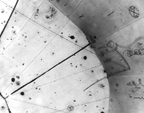The world's first neutrino observation in a hydrogen bubble chamber.
It was found Nov. 13, 1970, in this photograph from the Zero Gradient Synchrotron's
12-foot bubble chamber. The invisible neutrino strikes a proton where three
particle tracks originate (lower right). The neutrino turns into a mu-meson, the long center track (extending up and left). The short track is the proton.
The third track (extending down and left) is a pi-meson created by the
collision.
Click on image for full size
Argonne National Laboratory
Neutrinos
The neutrino is an extremely light particle. (You definitely couldn't weigh one on your bathroom scale!) It also has no electric charge.
Fusion reactions in the Sun produce neutrinos. By detecting these neutrinos, scientists can learn about the inside of the Sun.
Billions of neutrinos from the Sun pass through the Earth without interacting with anything (they may be passing through your hands right now!). Large detectors are actually able to find some neutrinos.
Click here for a brief history of
the neutrinos.
Most of the neutrinos that reach Earth from space come from the Sun (called solar neutrinos). Neutrinos are also released when cosmic gamma rays hit the Earth's atmosphere. Other sources of neutrinos are exploding stars
(supernovae),
relic neutrinos (from the
big bang)
and nuclear power plants.
You might also be interested in:
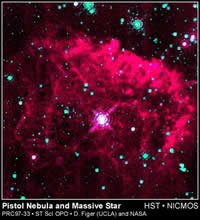
Fusion in the core of stars is reached when the density and temperature are high enough. There are different fusion cycles that happen in different phases of the life of a star. These different cycles
...more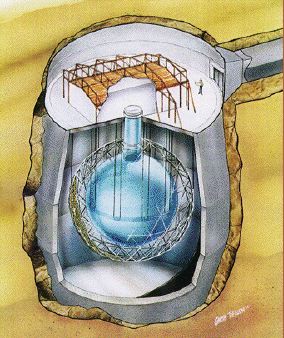
Neutrino interactions with matter are extremely rare, so detecting a neutrino is very hard. Neutrino detectors are typically large, underground tanks filled with a fluid that reacts to neutrinos. In neutrino
...more
A Supernova is a very massive star that explodes at the end of its life. The supernova is where the heavy elements (heavier than iron) are made.
...more
The Sun releases energy. This energy is made in the center of the Sun. But we can't see past the surface of the Sun. So how do we know how this energy is made? Well, scientists use diagnostics to figure
...more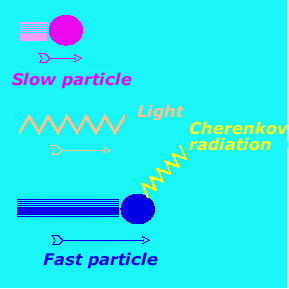
The theory of relativity states that no particle can travel at the speed of light in a vacuum. However, light travels at lower speeds in dense media, like water. A particle traveling in water must have
...more
Super-Kamiokande is a neutrino detector located in the Kamioka Mozumi mine in Japan. Water fills this huge tank. In fact, it is the world's largest underground neutrino detector. Super-Kamiokande is a
...more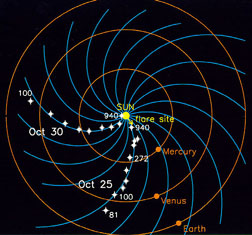
The Sun acts like it has a big magnet in the middle of it. We call this the Sun's magnetic field. The Sun's magnetic field has a fancier name, the Interplanetary Magnetic Field (IMF). This just means that
...more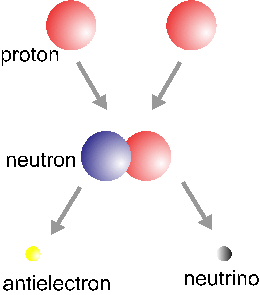
In the basic Hydrogen fusion cycle, four Hydrogen nuclei come together to make a Helium nucleus. This is the simple version of the story. There are actually electrons, neutrinos and photons involved in
...more


